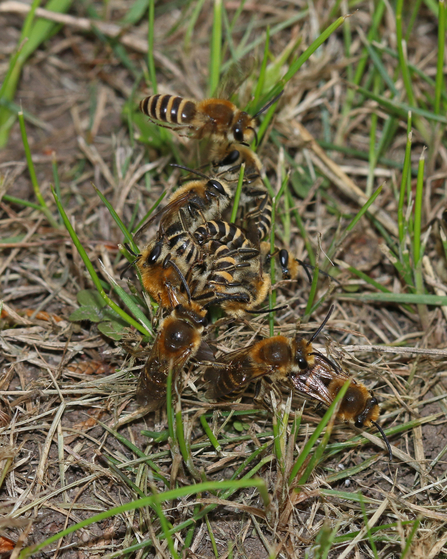Any animal that is known to directly contribute to the pollination of plants is termed a ‘pollinator’. Globally, this term includes species as diverse as bats, reptiles and birds; however, the most effective pollinators by far are insects, and in the UK all pollinators are insects.
Insect pollination occurs when an insect, foraging for nectar or pollen, transfers pollen from one plant to another. The pollen fertilises the plant, causing new seeds to grow. Why is insect pollination so important? Although insect pollinators may be very small, and many carry out the vital pollination process in a discreet way, often at night, their impact is huge. Insects pollinate more than 80% of flowering plants, including many wildflowers and trees, fruit and vegetables helping to create and maintain habitats, ecosystems and plant populations that many other animals rely on for food and shelter, humans included!
For many people, honeybees are considered to be one of the main insect pollinators. Honeybees are important for pollinating crops and providing honey, but there is only one species of honeybee in the UK and it is a managed or farmed species and therefore, is not facing any serious threat to its numbers and survival. On the other hand, wild insect pollinators play a much more efficient and significant role than honeybees at pollination. There are thousands of different wild pollinating insects, many of which are under great threat or vulnerable because of declining numbers and ranges. Some wild pollinators have very specialised relationships to specific plants, but others are adapted to be plant generalists.
In the UK pollinators fall within 4 main orders:
Hymenoptera- including all bees and bumblebees, wasps, as well as ants and sawflies
Diptera – true flies, including hoverflies, bee flies, mosquitoes and midges which are amongst many other groups
Lepidoptera – the butterflies and moths
Coleoptera - beetles
The abundance and diversity of wild pollinators has declined sharply over the last 4 decades, due to habitat loss or degradation, pesticide use and intensive farming and land use, development pressure, as well as the increasing impact of climate change. The conservation and survival of our diverse pollinating insect fauna is critical to restoring and sustaining a healthy and robust natural world.
Like all insects, pollinators have a fascinating four-stage life cycle of egg-larva-pupa-imago (adult), which can vary greatly from species to species. Whilst the majority of pollinators have an annual life cycle, many species, including some solitary bees, butterflies and hoverflies may be ‘bivoltine’ with 2 broods in one year. Other wild pollinators, such as some moths and beetles, may have one stage of their lifecycle, such as the larvae or pupae, that survive deep within plant material or underground for several years before metamorphosing into the adult stage.
Meeting the needs of the diverse habitat and food requirements of each stage of a species lifecycle is critical to its successful survival and conservation.
Stage 1: Beginning
The egg stage is very short for many insects, lasting only a few days. However, some insects may hibernate in the egg stage to avoid extreme conditions, in which case this stage can last several months. For example, some species of butterfly and moth lay their eggs on very specific parts of certain plants, where they overwinter.

